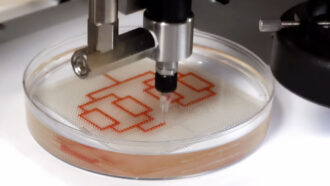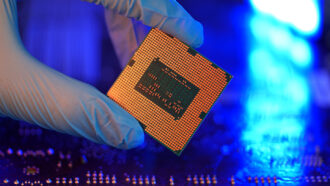Bioelectronics research wins top award at 2024 Regeneron ISEF
The annual international competition gave out more than $9 million in prizes to teen scientists
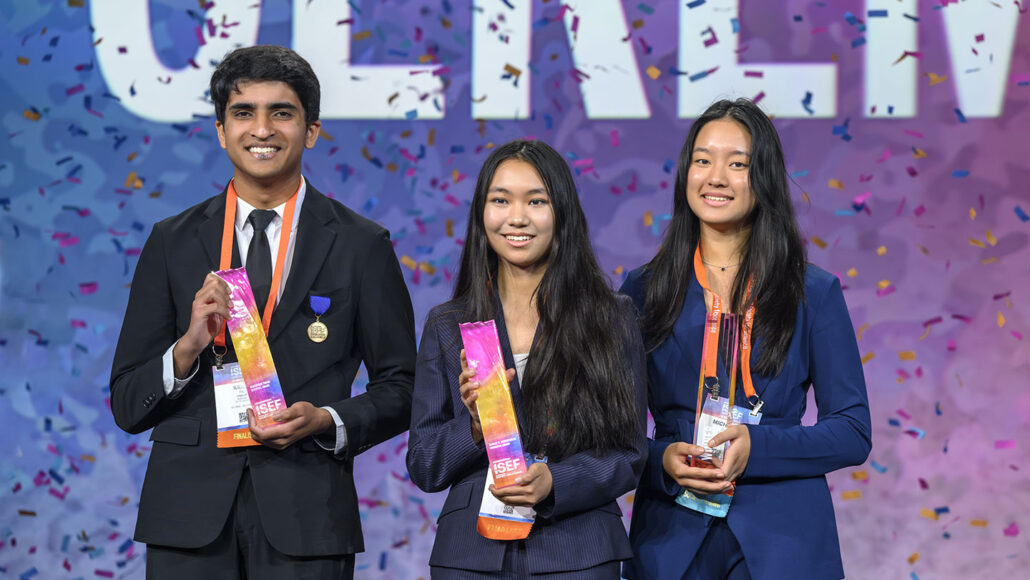
The 2024 Regeneron ISEF winners at the award ceremony. From left to right: Krish Pai, Grace Sun and Michelle Wei.
LOS ANGELES, Calif. — Research on bioelectronics, microbe genetics and mathematics earned three teens top awards — and big prize money — today at the 2024 Regeneron International Science and Engineering Fair (ISEF). These young researchers each took home at least $50,000.
Almost 2,000 high-school finalists from around the world traveled to the City of Angels this week to compete. Hundreds of these teens shared more than $9 million in awards at the prestigious event.
“Even at your age, you’re already finding solutions to some of the biggest challenges we face,” said Maya Ajmera, speaking at the grand awards ceremony today. “Among all of you, I see future innovators, leaders and trailblazers. And no matter what happens today, know that by being here, you are already winners.” Ajmera is president of the Society for Science (which also publishes this magazine).
The Society has run ISEF since it created this annual competition in 1950.
Grace Sun, 16, won the top award this year. She’s a junior at Paul Laurence Dunbar High School in Lexington, Ky. The teen improved a type of electronic device that could work inside the body to help diagnose and treat health problems. Her innovation affects a type of transistor. That’s a device that amplifies electrical signals.
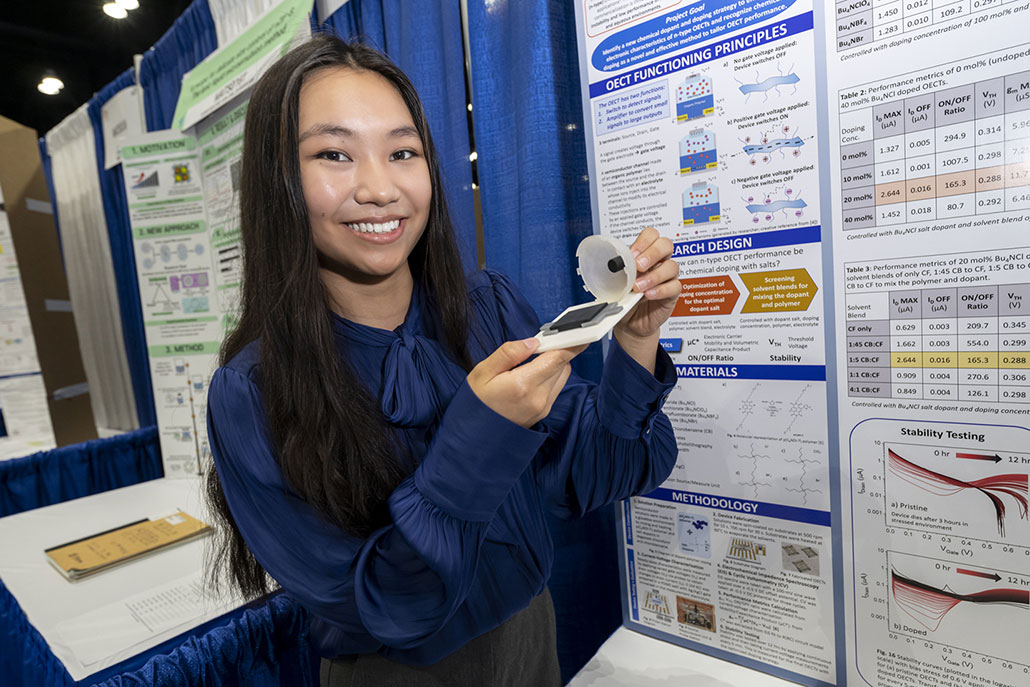
The type Grace worked with can pick up such signals that naturally occur in the body — then amplify them. For example, she says, an implanted version might one day help regulate someone’s heartbeat or monitor blood-sugar levels.
Researchers have been developing these bioelectronic devices for many years. But none are for sale yet. “That’s because of their current performance issues,” Grace says. They’ve proven unstable in the body and slow to move electrical signals.
Her simple and low-cost innovation: Add a salt to the polymer that makes up the device. This changes the molecular structure and properties of the polymer. And that greatly improved the device’s performance.
Grace tested four salts as potential additives. The one known as TBACl gave the best results. (That’s short for tetrabutylammonium chloride). Amounts of compounds are frequently measured in moles. Grace found TBACl worked best when that salt was one in every five moles of material in the polymer’s final recipe.
That recipe “improves the device’s amplification abilities,” Grace reports. It also makes it more stable in the human body. Indeed, that salt increased the transistor’s ability to boost a signal by 97 percent. Compared to an untreated version of the device, adding the salt upped its ability to store an electric charge by 107 percent and increased its electrical signal mobility by 77 percent.
Blending the chemical into a special liquid prior to combining it with the polymer made it even better. (The liquid is made of one part chlorobenzene to five parts chloroform.) That blending more than tripled the device’s amplification ability and boosted its electrical signal mobility by 157 percent. That’s compared to blending the salt in chloroform only.
“Because these [electrical devices] are so cost-effective, and versatile,” Grace says, “I hope to provide more accurate, safer, as well as cheaper medical diagnostics and treatment for a variety of diseases.”
For her research, Grace received this year’s George D. Yancopoulos Innovator Award and $75,000. She also took first place in the materials science division. That brought her another $5,000. (She describes her work in a video available here.)
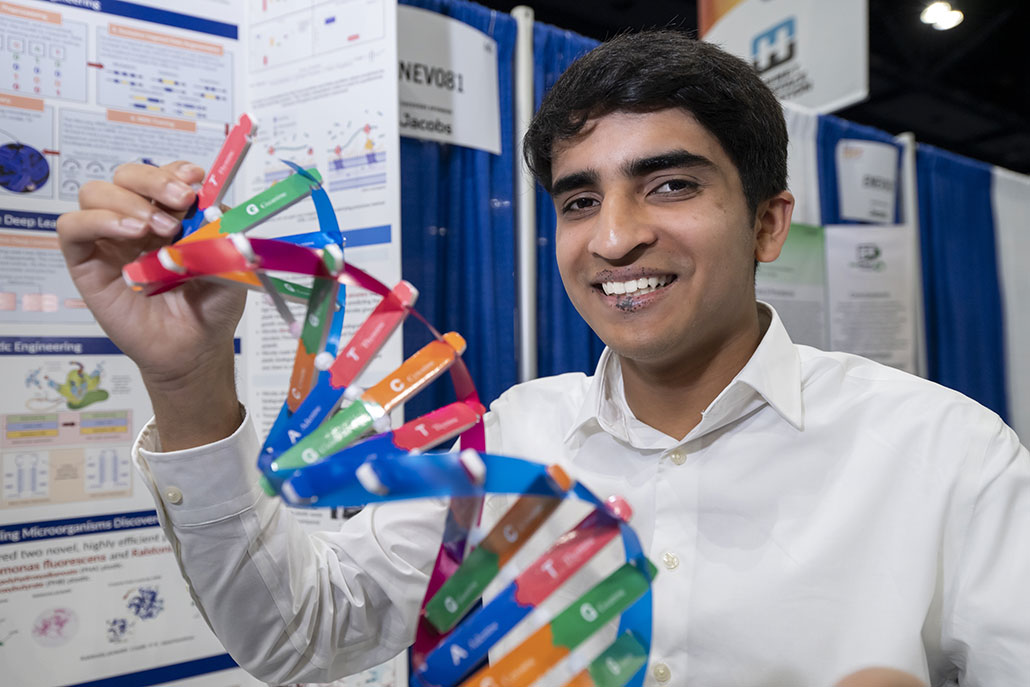
Finding microbes that munch on microplastics
Sadly, tiny bits of plastic litter the environment. These microplastics get everywhere. Scientists have even found them in people’s blood. Krish Pai, 17, grew concerned. So he developed a tool that examines DNA data that have been collected from microbes. His goal: to predict which microbes will likely break down plastics.
“Plastic has become a major problem,” Krish says. “I wanted to create a practical solution using my background in computational biology and AI.” Krish is an 11th grader at Canyon Crest Academy in San Diego, Calif.
Scientists have already turned up some microbes that can degrade certain plastics. But many of those discoveries were by accident. Other times, scientists had to test species or strains of microbes one by one. Looking for plastic-eaters this way, Krish says, is “really random and really inefficient.”
So he scoured existing databases on microbial DNA. He then turned these data into a set having more than 6 million genes. They came from at least 700 different species previously reported to break down plastic.
Krish used four-fifths of his new dataset to train a computer model. It learned how to identify potential microplastic-munchers based those that were already known. The teen then tested this AI-based tool — which he named Microby — on the remaining one-fifth of his dataset.
The tool accurately predicted how well a microbe could break down a plastic and the type of plastic 92 percent of the time, Krish reports. Along the way, he discovered two new plastic-eating bacteria (Pseudomonas fluorescens and Ralstonia pickettii). In the lab, the teen confirmed that these two microbes can, indeed, break down plastics.
Microby also predicts which DNA sequences could be added to give other microbes the ability to eat plastic. As his next step, Krish aims to test this out using the gene-editing tool CRISPR.
This work earned Krish a Regeneron Young Scientist Award and $50,000. He also placed first in the environmental engineering division. It came with another $5,000. (He describes his work in a video available here.)
Solving a computational conundrum
Mathematical modeling is important for many fields — from finance and quantum physics to the analysis of an athlete’s talent. Often, researchers use this technique to pick the best criteria to achieve some goal. It might be maximizing energy efficiency, for instance.
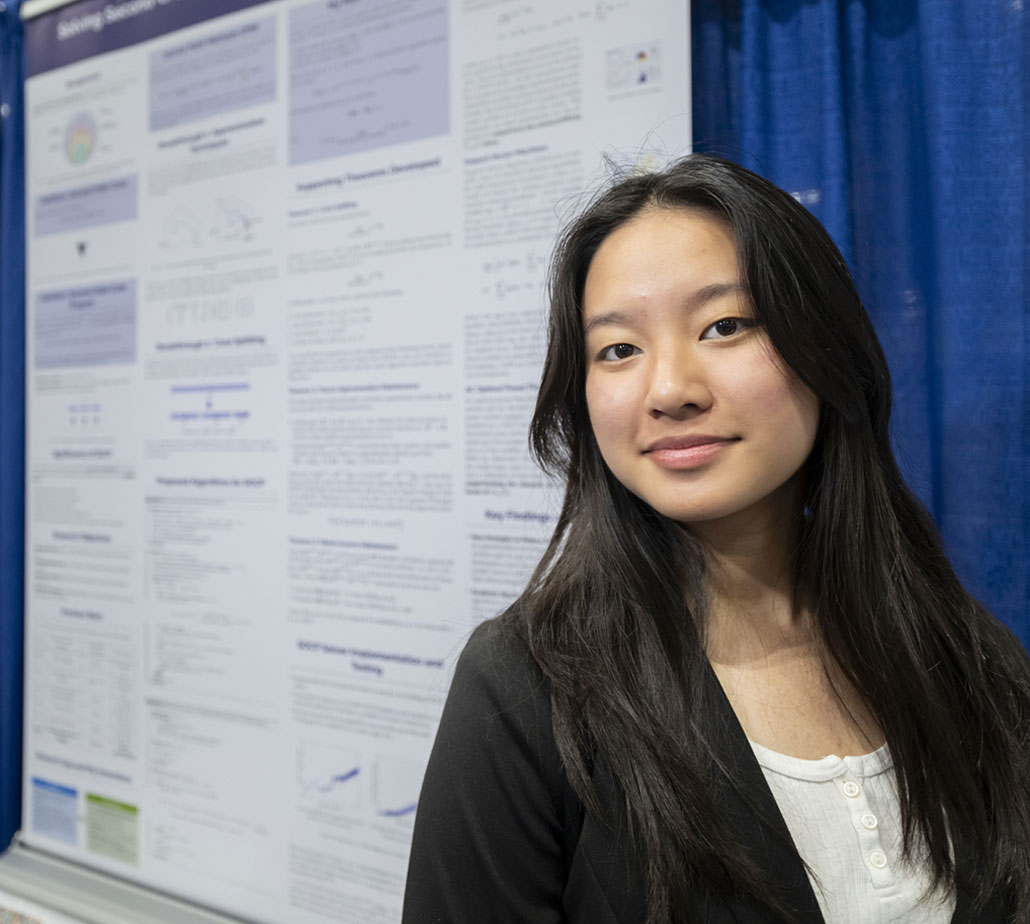
But there are multiple conditions that the computations must satisfy to arrive at an answer. These conditions are called constraints.
One approach to solving problems this way is called second-order cone programming, or SOCP. Those SOCP solvers must manage a lot of constraints. The software to do this takes a huge amount of computing time and power.
But Michelle Wei, 17, has now developed a technique to help computers do these math analyses faster and more easily.
“I really wanted to see how I could use something in computer science to make an impact, but with something that also has to do with a lot of math,” she says. Michelle is a senior at the Harker School in San José, Calif.
Instead of finding the exact path to the best solution, her method estimates how to get there. It also splits complicated constraints in a mathematical model into simpler ones. When used together, these two strategies produce an algorithm — a step-by-step process — that solves SOCP problems faster than other algorithms can.
Michelle wants to make her algorithm widely available. That way, people in many fields of research can adopt her approach. (She describes her work in a video available here.)
Do you have a science question? We can help!
Submit your question here, and we might answer it an upcoming issue of Science News Explores
The teen received a Regeneron Young Scientist Award and $50,000. Her research also earned her first place in ISEF’s systems software division and $5,000 more. Michelle won several special awards, too. She took first place in ISEF’s Principles of Security and Privacy category. It’s offered by the U.S. National Security Agency. She also won first prize from the Scientific and Technological Research Institution of Türkiye and $1,200 from the China Association for Science and Technology.
ISEF isn’t the first major win for Michelle this year. Two months ago, she won third place — and $150,000 — at the Regeneron Science Talent Search.
But even students who didn’t return home with a top award have valued their time at ISEF.
“It’s so amazing just to go to ISEF and see all these thousands of kids from around the globe coming [to] the same place and uniting because they’re passionate about research,” says Kate Choi, 17.
This junior at the Potomac School in McLean, Va., placed third in ISEF’s biomedical and health sciences division, receiving $1,000. She also got an honorable mention and a student membership from the Association for the Advancement of Artificial Intelligence.
This year’s Regeneron ISEF finalists came from almost 70 countries, regions and territories.

Educators and Parents, Sign Up for The Cheat Sheet
Weekly updates to help you use Science News Explores in the learning environment
Thank you for signing up!
There was a problem signing you up.

